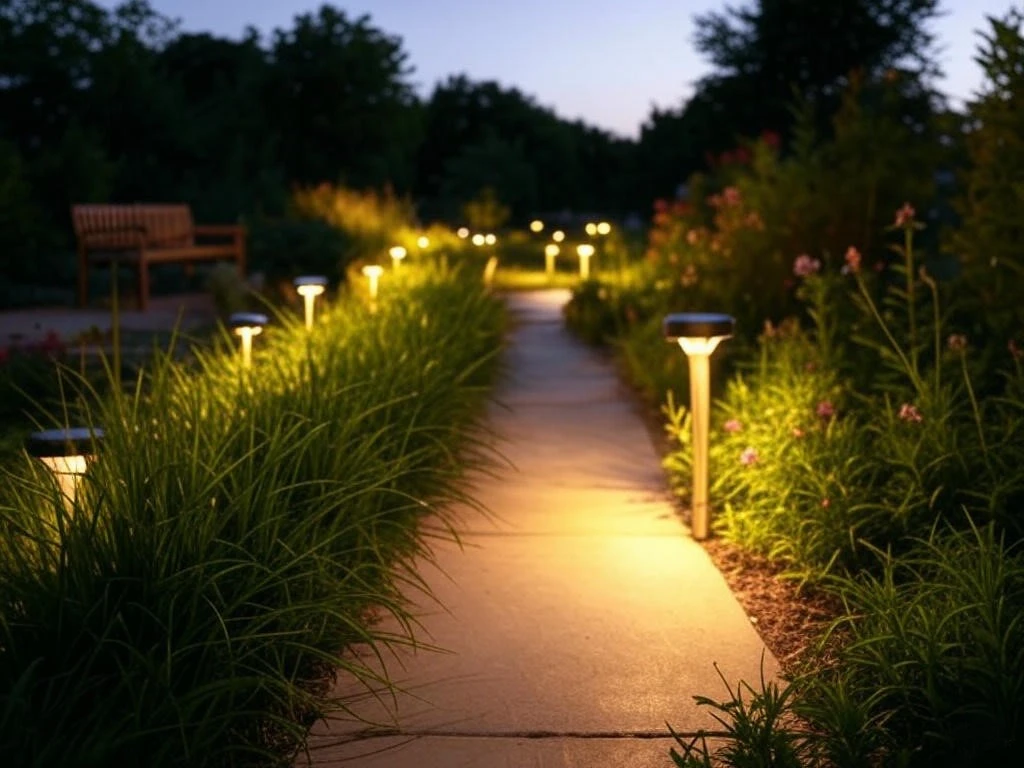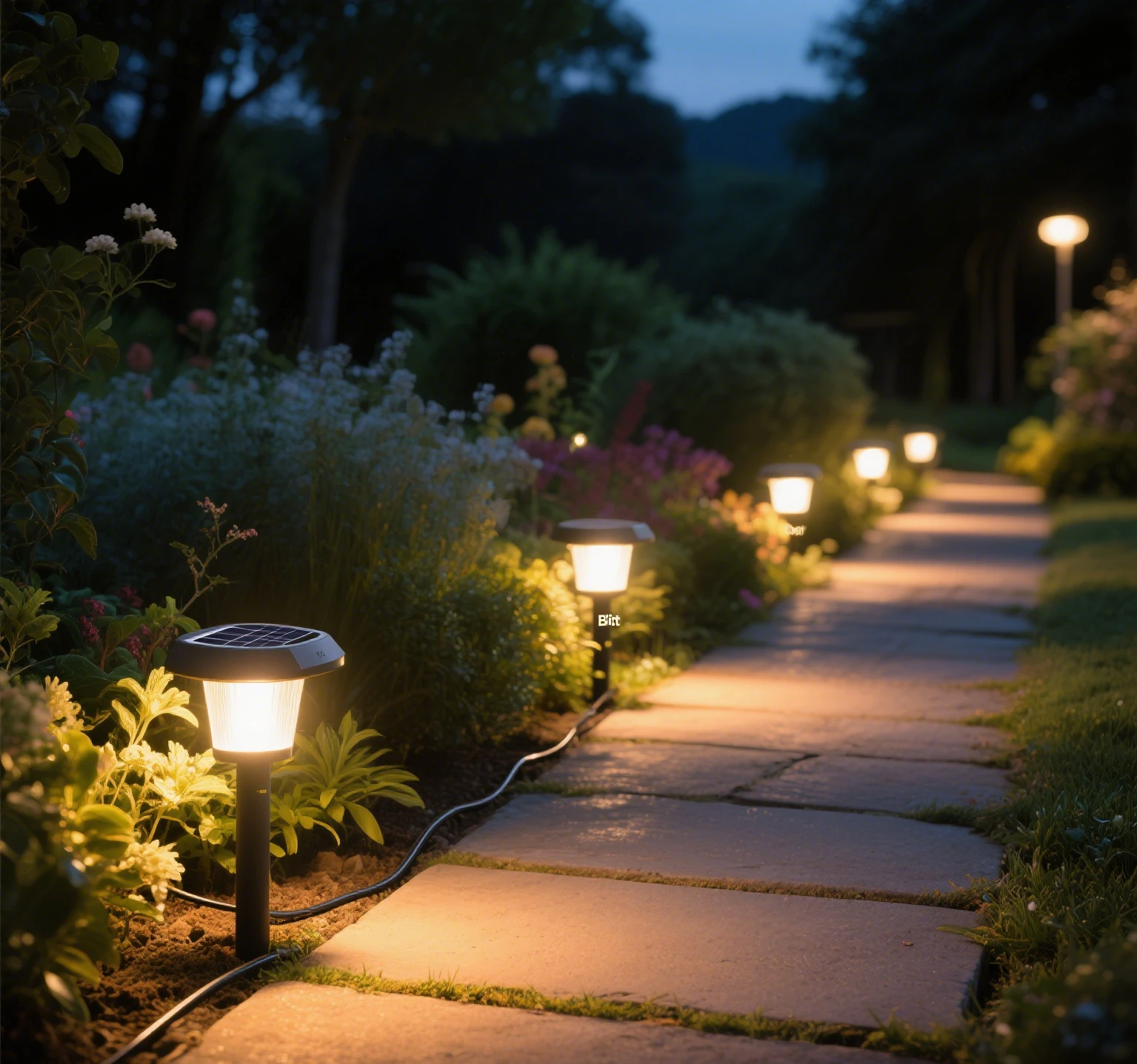Solar lights are an eco-friendly and cost-effective way to illuminate your outdoor spaces, from gardens to pathways. However, it’s frustrating when your brand-new solar lights fail to glow as expected. This article dives into the common reasons why your solar lights not working and provides practical solutions to get them shining brightly. Drawing from extensive research and hands-on expertise, we’ll explore troubleshooting steps, maintenance tips, and ways to ensure your solar garden lights perform optimally.

Understanding How Solar Lights Work
Before diagnosing the problem, it’s helpful to understand the basic mechanics of solar-powered lights. These devices rely on a few key components: a solar panel, a rechargeable battery, an LED bulb, and a light sensor. The solar panel converts sunlight into electricity, which is stored in the battery. At dusk, the light sensor triggers the LED to illuminate using the stored energy. If any of these components malfunction, your outdoor solar lights may not work as intended.
Common Reasons Your Brand New Solar Lights Aren’t Working
1. Insufficient Sunlight Exposure
One of the most frequent culprits behind solar lights not working is inadequate sunlight reaching the solar panel. Even brand-new lights need proper exposure to charge effectively. If your solar garden lights are placed in shaded areas—under trees, near tall buildings, or in spots with limited sunlight—they may not receive enough energy to function.
Solution: Relocate your lights to an area with at least 6-8 hours of direct sunlight daily. Clean the solar panel with a soft cloth to remove dirt, dust, or debris that might block sunlight. For solar pathway lights, ensure they’re positioned away from obstructions like overgrown plants.
2. Battery Issues
Brand-new solar outdoor lights often come with batteries that are either not fully charged or improperly installed. Some models ship with a pull-tab that must be removed to activate the battery. If this tab is still in place, the lights won’t work. Additionally, batteries may lose their charge during storage or shipping, especially if the lights have been sitting on a shelf for months.
Solution: Check the battery compartment and remove any pull-tabs or plastic strips. If the battery is rechargeable, place the light in direct sunlight for a full day to charge. For lights with replaceable batteries, ensure they’re correctly inserted, and consider replacing them with high-quality NiMH batteries for solar lights, which are commonly used in solar lighting systems. If the problem persists, test the battery with a multimeter to confirm it’s holding a charge.
3. Light Sensor Malfunction or Misplacement
The light sensor in solar-powered outdoor lights detects darkness to turn the light on. If the sensor is exposed to artificial light from streetlights, porch lights, or car headlights, it may incorrectly assume it’s daytime and prevent the light from activating. Additionally, a defective sensor in a brand-new unit could cause the solar lights not turning on issue.
Solution: Ensure the light sensor isn’t obstructed by dirt or debris. Test the sensor by covering it with your hand or a piece of tape to simulate darkness—if the light turns on, the sensor is functional but may be affected by nearby light sources. Relocate the lights away from artificial lighting, or adjust their angle to minimize interference. If the sensor is faulty, contact the manufacturer for a replacement, as this is often covered under warranty for brand-new solar lights.
4. Manufacturing Defects or Poor Quality
While rare, manufacturing defects can occur, even in new solar lights. Loose wiring, faulty LEDs, or subpar solar panels can prevent the lights from working. Low-quality products, especially those from unreliable brands, may also fail to deliver consistent performance. This is particularly true for budget solar string lights or decorative models that prioritize aesthetics over durability.
Solution: Purchase solar lights from reputable brands known for quality, such as those reviewed by trusted sources like Popular Mechanics for their reliability and battery life. Check customer reviews before buying to avoid models with frequent complaints about defects. If you suspect a manufacturing issue, reach out to the retailer or manufacturer for a refund or replacement. Many solar outdoor lights come with a one-year warranty, so keep your receipt handy.

5. Incorrect Installation or Setup
Improper setup is another common reason for solar lights not working. Some solar pathway lights or solar wall lights require assembly, such as attaching the solar panel or securing the light to a stake. If components are misaligned or not securely connected, the light may not function. Additionally, some models have an on/off switch that must be activated before use.
Solution: Double-check the user manual for installation instructions. Ensure all components are firmly connected and the on/off switch (if present) is in the “on” position. For solar garden lights, confirm that the stake is firmly planted in the ground to keep the solar panel at the correct angle for sunlight exposure.
6. Weather and Environmental Factors
Weather conditions can impact the performance of solar-powered lights, even when they’re brand new. Cloudy days, heavy rain, or snow can reduce the amount of sunlight reaching the solar panel, leading to insufficient charging. In colder climates, low temperatures can also affect battery performance, causing solar lights not turning on at night.
Solution: If you live in an area with frequent overcast weather, consider high-efficiency solar lights designed for low-light conditions. These models often have larger solar panels or more efficient batteries. For cold climates, opt for lights with batteries rated for low temperatures, such as NiMH batteries for solar lights. After severe weather, inspect the lights for water ingress or damage, as some budget models may not be fully weatherproof.
Troubleshooting Steps for Solar Lights
If you’ve checked the above issues and your solar lights not working problem persists, follow these step-by-step troubleshooting tips:
- Test the Light in Darkness: Place the light in a dark room or cover the sensor to confirm whether it turns on. This isolates whether the issue is with the charging system or the light itself.
- Inspect the Solar Panel: Look for cracks, scratches, or discoloration on the panel, which could indicate damage. Clean it gently with a damp cloth to ensure maximum light absorption.
- Check Connections: Ensure all wires and components are securely connected. Loose connections are a common issue in solar string lights or multi-component systems.
- Reset the Light: Some solar outdoor lights have a reset button or require you to turn them off and on again to recalibrate the system.
- Contact Support: If none of these steps work, reach out to the manufacturer’s customer service. Provide details about the issue and proof of purchase to expedite the process.
Preventative Maintenance for Long-Term Performance
To keep your solar garden lights functioning reliably, adopt these maintenance habits:
- Regular Cleaning: Wipe the solar panel every few weeks to remove dust, pollen, or bird droppings that can reduce efficiency.
- Seasonal Adjustments: Reposition lights seasonally to account for changes in the sun’s angle, especially for solar pathway lights in fixed positions.
- Battery Replacement: Replace rechargeable batteries every 1-2 years, as their capacity diminishes over time. Use NiMH batteries for solar lights for optimal performance.
- Storage During Off-Seasons: If you live in an area with harsh winters, store solar-powered outdoor lights indoors to protect them from extreme cold or snow.
Choosing the Right Solar Lights
To avoid issues with brand new solar lights, invest in high-quality products from the start. Look for lights with durable materials, such as stainless steel or weather-resistant plastic, and check for features like adjustable brightness or motion sensors for added versatility. Brands recommended by sources like Popular Mechanics often undergo rigorous testing for portability, battery life, and performance, making them a safer bet for solar outdoor lights.
When to Seek Professional Help
If your solar lights not turning on after trying all troubleshooting steps, it may be time to consult a professional. This is especially true for integrated systems, such as solar street lights or larger solar-powered lights used for commercial purposes. A technician can diagnose complex issues like internal wiring problems or solar panel inefficiencies. For warranty claims, contact the manufacturer promptly to avoid missing deadlines.
Conclusion
Dealing with solar lights not working can be frustrating, but most issues are easily fixable with the right approach. By ensuring proper sunlight exposure, checking batteries, addressing sensor issues, and choosing quality products, you can enjoy the benefits of solar garden lights for years to come. Regular maintenance and careful installation will further enhance their performance, keeping your outdoor spaces beautifully lit and energy-efficient. If problems persist, don’t hesitate to leverage warranties or professional support to get your solar-powered outdoor lights back in action.


Leave a Reply